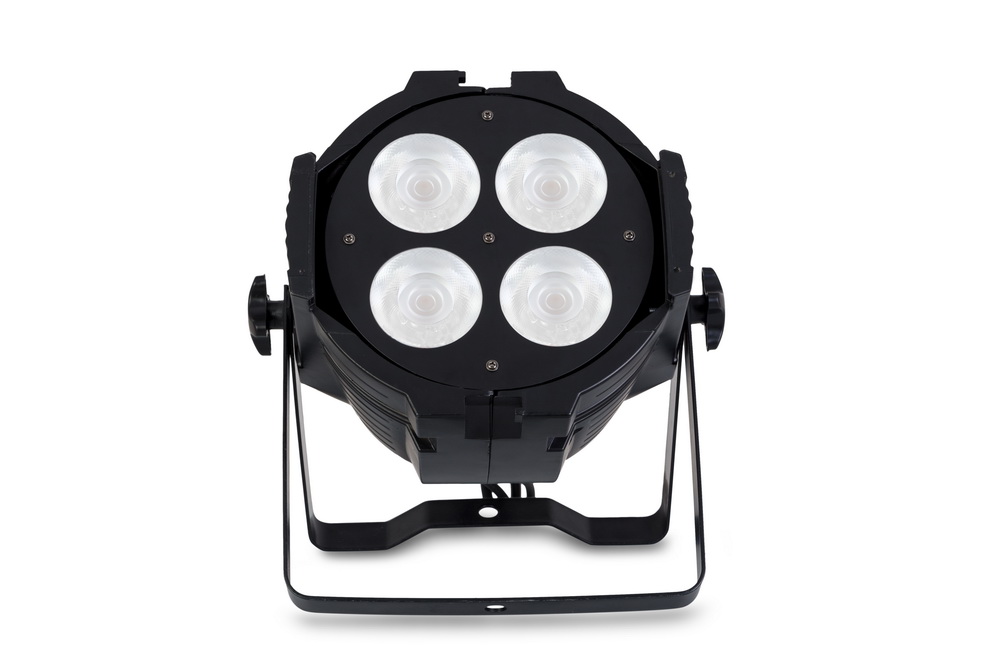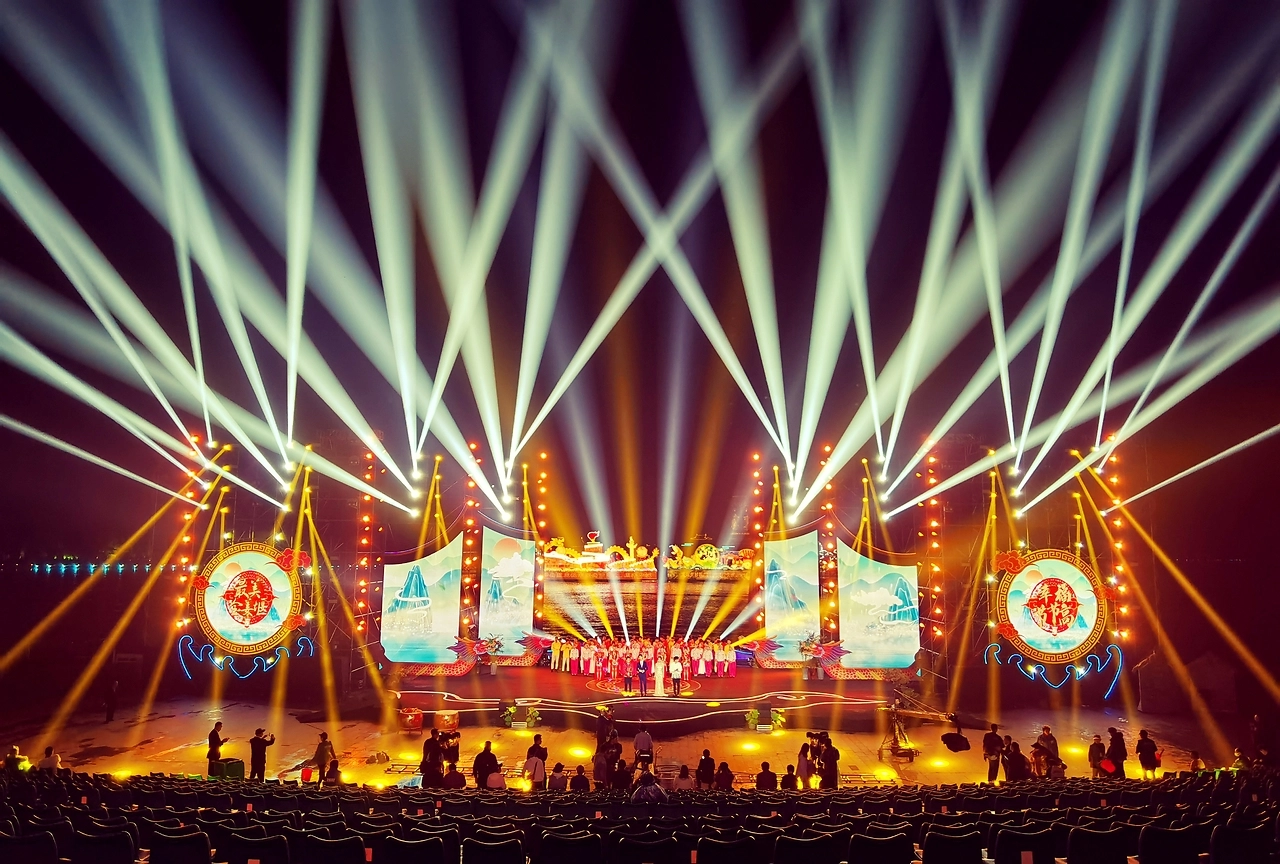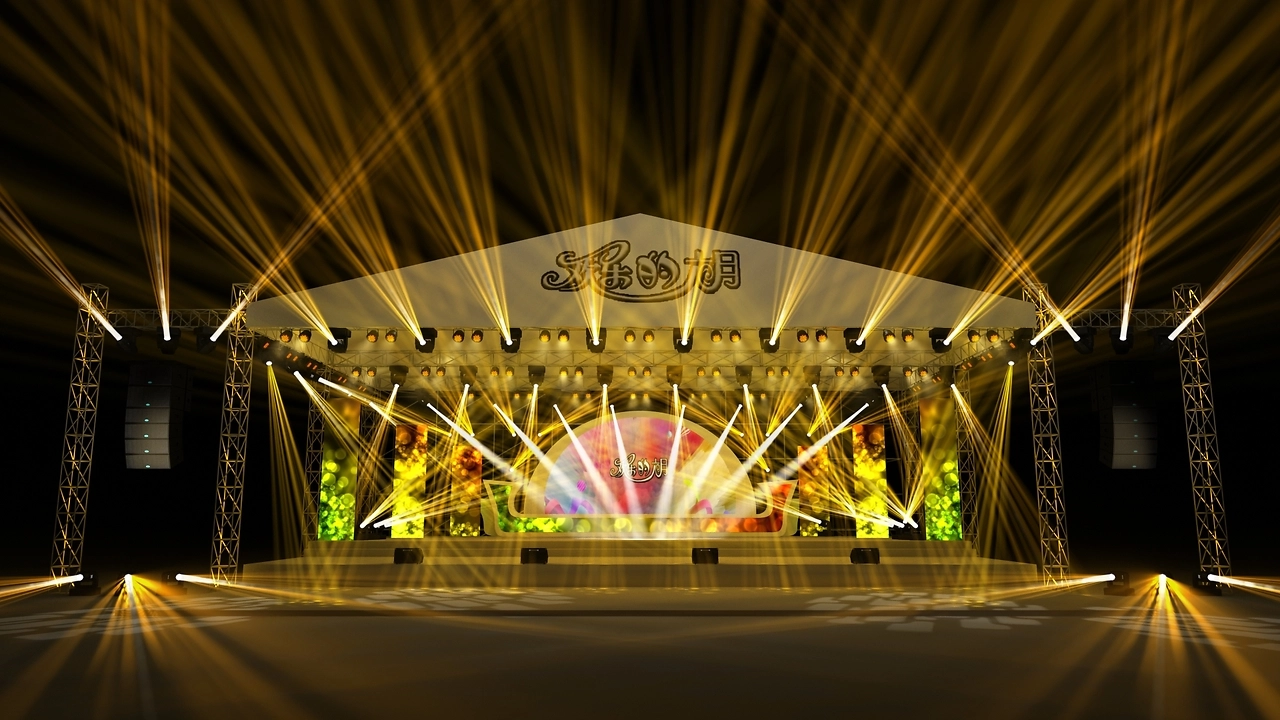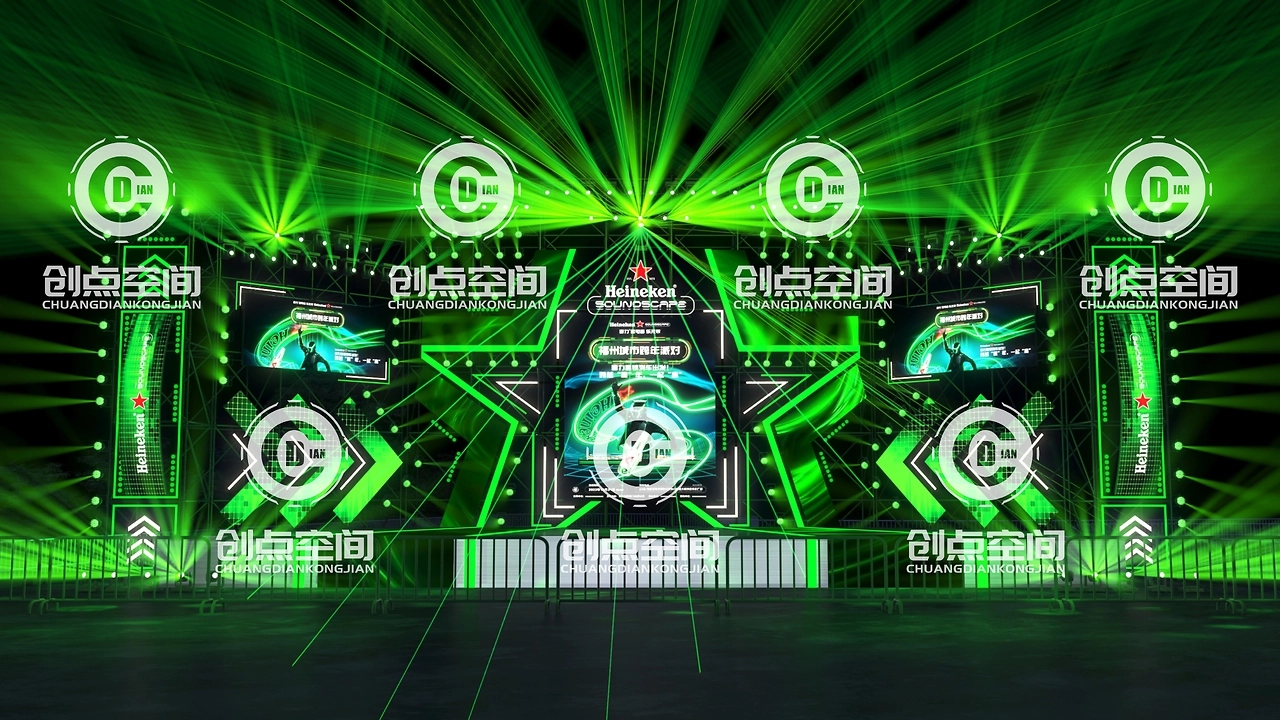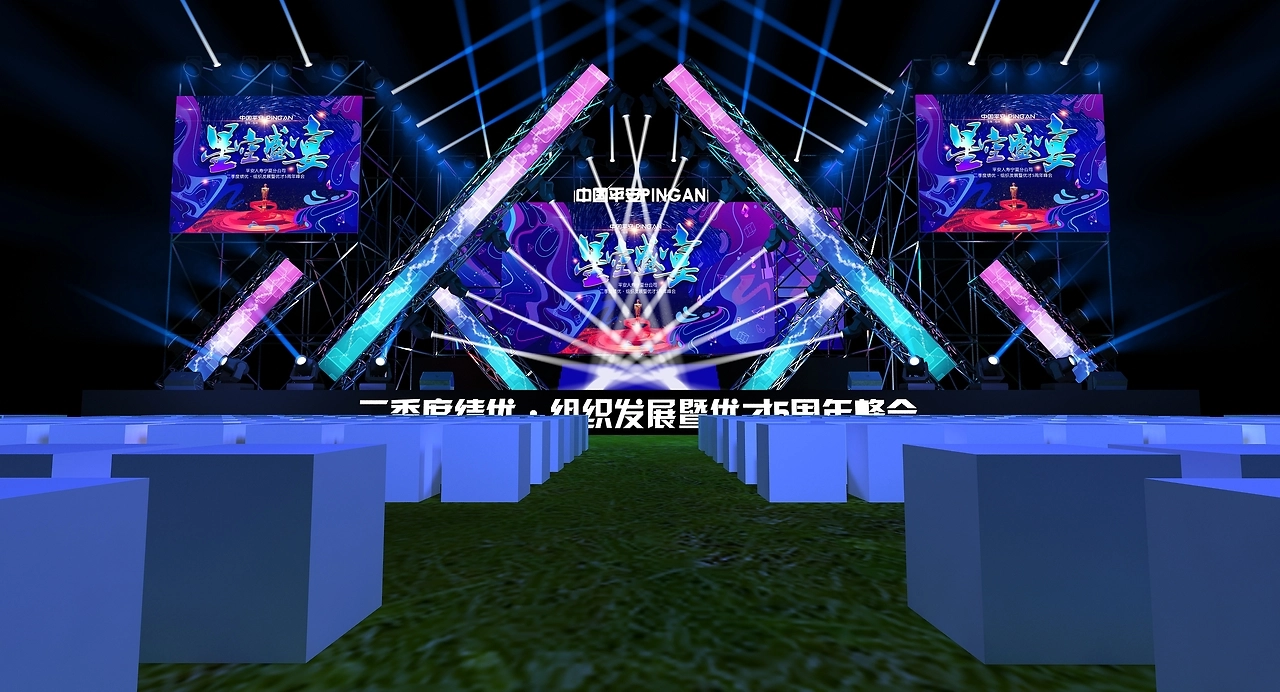Stage lights are the "visual language" of stage art, and different types of lighting fixtures have distinct functional characteristics that make them suitable for different scenes. The following provides a detailed explanation on how to select suitable stage lights based on scene requirements, from the perspectives of lamp type analysis and scene adaptation guidelines, to help achieve precise light and shadow expression.
1、 Common types and core functions of stage lights
The core value of stage lights is to shape the atmosphere, highlight the subject, and enhance rhythm through light and shadow. The following are the mainstream types and functional characteristics:
Lamp type
Core functions
Applicable scenario keywords
Summary of Characteristics
Par lamp basic lighting, large-scale dyeing universal scene, soft and uniform basic light, wide coverage, low cost
The chasing light focuses on a specific person/object, highlighting the close-up of the main character (wedding, drama, concert) with a strong beam, adjustable focal length, and tracks moving targets
Beam lamp with strong spotlight, shaping lines and moving scenes (concerts, electronic music). The beam is sharp and has strong penetration, suitable for dynamic effects
Large area color rendering with dye lamps creates an atmosphere. The dominant scene (wedding, dance) has high color saturation, wide coverage, and no obvious light spots
Pattern lights project patterns/textures (such as leaves, logos, patterns), scene narratives (plays, press conferences), and interchangeable pattern pieces that combine lighting and "visual" functions
Shaking head light with multi angle movement for lighting (combined with beam/pattern/coloring), dynamic scenes (concert, dance), flexible turning, and can quickly switch positions according to rhythm
High frequency flashing of strobe lights enhances fast-paced scenes (electronic music, rock music) with adjustable flashing frequency, enhancing visual impact
Laser light with strong laser beam, shaping technology/dreamy special effects scenes (concerts, parties). The beam is concentrated, the color is pure, and safety should be taken into account
2、 Scenario adaptation guide
1. Drama/Drama Performance
Core requirement: To restore realism, highlight character emotions and scene details, and coordinate with changes in the plot atmosphere.
Suitable lighting fixtures:
Pa Deng: Provides basic lighting to ensure uniform brightness on the stage, allowing the audience to see the actors' expressions and scene details (such as tables, chairs, and scenery) clearly.
Pattern lights: project patterns related to the plot (such as window light and shadow, mottled leaves, raindrops) to enhance the sense of scene immersion (e.g. late night scene projection of moon patterns).
Chasing light: Focus on the protagonist during monologues and key conversations, weaken the background, and guide the audience's attention.
Dyeing lamp: Adjust the color according to the plot atmosphere (e.g. use deep blue/cool gray for sad scenes, warm yellow/orange red for festive scenes).
Attention: Avoid direct exposure of strong light to the actor's eyes, prioritize using soft light effects, and maintain natural transitions between light and shadow.
2. Concert/Concert
Core requirement: To create a dynamic and varied visual rhythm that complements the music style (rock, lyrical, electronic) and enhances stage tension.
Suitable lighting fixtures:
Shaking head beam light: rapidly rotating with the rhythm of music, projecting dynamic beams (such as fan-shaped and intersecting beams), and creating "light and shadow jumping" in conjunction with drum beats and bass rhythms.
Laser light: project multiple laser beams (green, blue) at the climax (such as chorus) to create a sense of technology or fantasy (for example, diffuse laser is used to create a starry sky in lyrical songs).
Flashing lights: High frequency flashing during rock/fast songs to enhance drum rhythm and increase audience excitement.
Chasing Light: Track the lead singer/core instrumentalist (such as guitar solo) throughout the entire process to ensure clear close-up shots.
Staining lamp: Use high saturation colors (red, purple, fluorescent powder) to render the stage, for example: use red+blue contrast for rock sections, and warm yellow+light powder for lyrical sections.
3. Dance performance
Core requirement: Highlight body lines and movement trajectories, and match light and shadow with dance rhythm and style.
Suitable lighting fixtures:
Beam lamp: focuses on the dancer's limbs (such as arms, legs, and rotation trajectory), and enhances the sense of lines with sharp beams of light (e.g. hitting off the instep when tiptoeing in ballet, tracking the body when rolling in modern dance).
Shaking head light: follows the movement of dancers, especially suitable for group dancing (such as synchronized movement of lights when changing in neat formations).
Dyeing lamp: Adjust the color according to the dance style (e.g. classical dance uses soft yellow/light pink, modern dance uses black and white contrast or fluorescent color, ethnic dance uses regional characteristic colors: Mongolian dance uses deep blue/grassland green).
Flashing lights: In fast-paced dances such as street dance and jazz, they flash in coordination with movements to enhance explosive visual effects.
4. Wedding/Celebration
Core requirements: Create a warm and romantic atmosphere, highlight newcomers, avoid glare or coldness, and be suitable for photography/video recording.
Suitable lighting fixtures:
PA lamp: Provides soft basic light (color temperature 3000K-4000K warm white light) to ensure a bright but not glaring venue, making it convenient for guests to see details and suitable for photography.
Chasing Light: Track the entire process of newcomers entering, exchanging rings, and kissing, with soft beam edges (avoiding hard edges that appear stiff) and a dark background that highlights the subject.
Dyeing lamp: Use low saturation colors such as light pink, champagne gold, and light purple to render the venue (such as stage background, both sides of the runway), avoiding bright colors such as bright red and green.
Pattern light: project romantic patterns such as hearts, petals, and wedding letters (e.g. project heart-shaped light spots on the background when a couple kisses).
5. Music Festival/Electronic Music Party
Core requirement: Strong visual impact, combined with heavy rhythmic music, to create a passionate and immersive atmosphere.
Suitable lighting fixtures:
Beam light+moving head light: Multiple units combined to quickly shake their heads and project intersecting beams, forming a "light network" that switches direction in accordance with the rhythm of the drum beats (e.g. the beam suddenly lights up and turns after each beat).
Laser light: Scan the entire field with green and blue laser beams, and use a smoke machine to make the beam visible, creating a "sense of time travel" (such as using laser beams to burst during electronic sound drop segments).
Flashing light: High frequency flashing (synchronized with BPM) enhances the connection between body and vision in fast-paced paragraphs (such as house, dubstep).
Stained lights: use high saturation colors such as fluorescent green, neon pink, and bright yellow to cover a large area of the stage and audience area, enhancing the "carnival feeling".
6. Press conferences/exhibitions
Core requirement: Concise and atmospheric, highlighting the product/speaker, ensuring clear image (compatible with camera shooting).
Suitable lighting fixtures:
PA lamp: Provides uniform base light (color temperature 5600K neutral white), avoiding uneven brightness that can cause facial shadows (especially suitable for close-up shots of the speaker).
Chasing light: Focusing on product displays or speakers, the beam is soft and not dazzling, ensuring that the lens is not overexposed during shooting.
Pattern lights: project brand logos or product related patterns (e.g. projecting car logos at car launch events) to enhance brand impression.
Dyeing lamp: Use neutral colors such as white and light gray to avoid grabbing the spotlight, and only lightly render the background with low saturation colors (such as light blue) when the product is unveiled.
3、 Matching skills and precautions
Layered combination: Basic light (Par light)+Focus light (Follow light/Pattern light)+Atmosphere light (Stained light) combination, ensuring "brightness and darkness, clear distinction between primary and secondary".
Cooperate with media: The smoke machine/dry ice function makes the beam clearer (especially for beam lights and laser lights), enhancing the sense of three dimensionality; The water mist machine can make the color of the dyeing lamp softer.
Safety first: Avoid direct eye contact with laser lights (must comply with safety standards); Frequency control of strobe lights (to avoid discomfort); Pay attention to heat dissipation for high-power lighting fixtures.
Adaptation equipment: If it involves live streaming/recording, it is necessary to choose lighting fixtures with high color rendering index (Ra ≥ 90) to avoid color distortion (such as PA lights and follow-up lights).
By matching the characteristics of lighting fixtures with the requirements of the scene, light and shadow can become a "second language", enhancing the infectious power of performances/activities.
